
Seeing Clearly, Caring Deeply, Your Partner in Animal Health
Endoscopy Solution to Animal Gastrointestinal Tract

Recommended Products
Veterinary Gastroscope
Technical parameters:
| Model | RAE-109 |
| Outer diameter | 5.8 mm |
| Inner diameter | 2.0 mm |
| Working length | 1200mm |
| Bending angle | 180° |
| Steering direction | 360° |
| Pixels | 1,000,000 |
| Depth of field | 7~100mm |
| Field angle | 120° |
| Accessories | Alligator forceps, Tripod forceps, Net forceps, snare forceps, cleaning brush and etc. |

Main advantages to compared with other brands

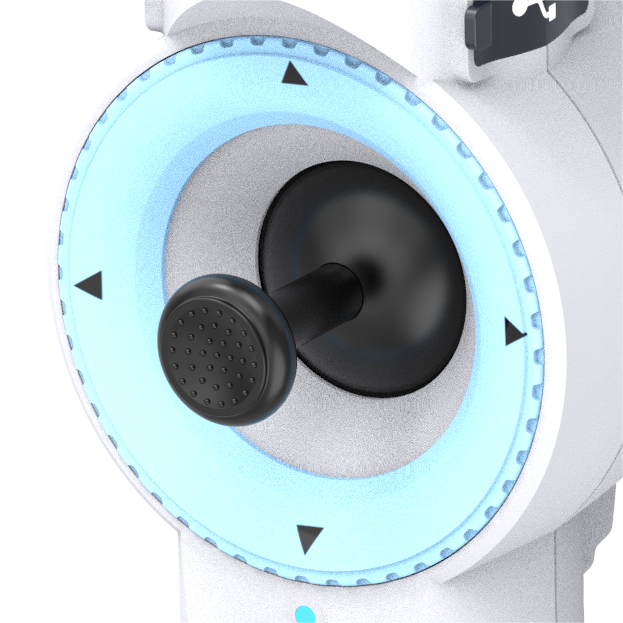
Directional joystick design
1.The joystick controls the bending section for 360° rotation and 180° bending.

Independent water & air supply channel
With the Independent channel, it's easy to clean the lens.
JeetVet Endoscope
Endoscopy Solution to Animal Gastrointestinal Tract
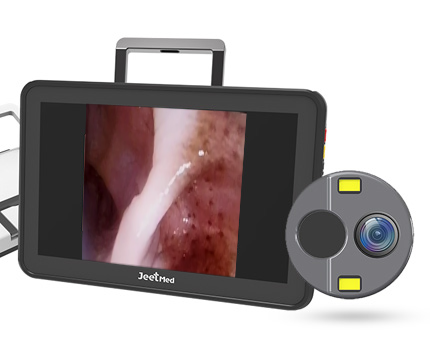
Overcome limited visualization
JeetVet endoscope features a small diameter and large working channel, capable of bending up to 180° and performing 360°rotational maneuvers. This design effectively addresses the challenges of endoscopic observation within the gastrointestinal tract of animals, eliminating blind spots and enabling precise diagnosis and treatment.

Handling uncooperative animals
Minimally invasive diagnostics & treatments: Endoscopic procedures are minimally invasive compared to traditional surgery, reducing animal discomfort and minimizing the need for anesthesia and associated risks.
Swift diagnosis: Endoscopic procedures are quick, reducing animal stress and response times.

Detection of minor lesions
JeetVet endoscopes penetrate deep into the gastrointestinal tract, to help veterinarians detect early-stage abnormalities such as tumors, foreign bodies, or minor inflammations.
Biopsy Sampling:Endoscopes allow for biopsy sampling through operational channels, obtaining lesion tissues for further pathological analysis to ensure accurate diagnoses.
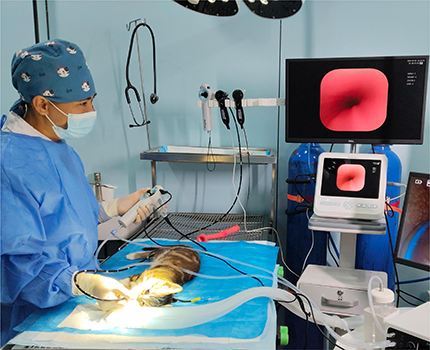
Management of infections and inflammations
Precision Treatment:Endoscopes directly visualize infected and inflamed areas, enabling precise local treatments such as localized medication injections, fluid drainage, or lesion tissue removal.
Real-time Monitoring:Treatment progress can be monitored in real-time, ensuring precise and effective operations.
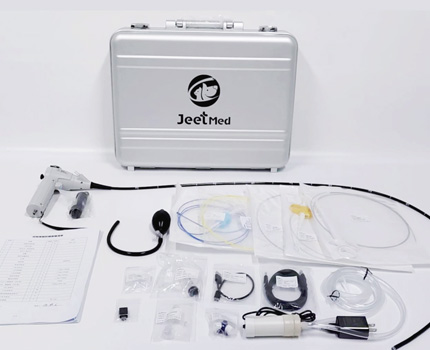
Overcoming technological limitations
Compared to traditional endoscopes, JeetVet endoscope offers a high cost-performance, flexible high-quality with advanced imaging capabilities. Its portable design ensures ease of use, making it suitable for various types of veterinary hospitals and clinics.

Management of diagnosis and treatment time and costs
Efficient diagnosis: Endoscopic examinations are rapid and accurate, reducing the need for unnecessary auxiliary tests, shortening diagnosis and treatment time, and lowering overall costs.
Reduced hospitalization time: Due to the minimally invasive nature of endoscopic operations, animals recover quickly post-surgery, resulting in shorter hospital stays and reduced subsequent care costs.
Through endoscopic technology, veterinarians can efficiently diagnose and treat gastrointestinal diseases in animals, enhancing medical quality and animal welfare while providing superior service to pet owners.
Gastrointestinal Examination and Treatment
Challenges in Diagnosing Animal Gastrointestinal Conditions
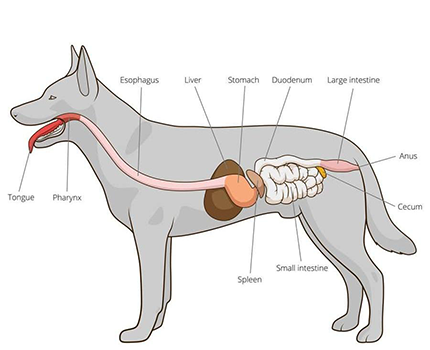
Limited visualization and access: Achieving a clear view of the entire gastrointestinal tract can be challenging due to the presence of folds, turns, and other anatomical features.
Patient Compliance and Stress: Animals, particularly those in distress or pain, may not cooperate during endoscopic procedures. This non-compliance can increase the difficulty of the procedure, potentially requiring sedation or anesthesia.
Detection of subtle lesions: Identifying small or early-stage lesions, such as minute tumors, ulcers, or areas of inflammation, can be challenging.
Foreign body retrieval: Ingested foreign objects are a common issue in veterinary practice. Retrieving these objects from the gastrointestinal tract requires precision and care to avoid causing additional injury or complications.
Technical limitations: The effectiveness of gastrointestinal endoscopy can be limited by the available equipment. High-quality, flexible endoscopes with advanced imaging capabilities are essential.
Cost and Accessibility: The cost of endoscopic equipment and procedures can be high, potentially limiting access to advanced diagnostic and therapeutic options for some patients and practices.
Advantages and Features
Why JeetVet Endoscope
Visualization of gastrointestinal tract
Provides detailed visualization of the gastrointestinal tract, facilitating the diagnosis and treatment of gastrointestinal diseases.
Application
JeetVet gastroscope mainly solves the problems of animal gastrointestinal examinations and foreign body removal surgeries. It can navigate through the twists and turns of the gastrointestinal tract and provide real-time video.
Gastrointestinal examination
The veterinarian inspects the lining of the gastrointestinal tract for abnormalities like ulcers, tumors, or foreign objects.
Biopsy and Treatment
Tissue samples can be collected, and treatments such as removal of foreign objects or application of medication can be performed.
High-Resolution Cameras
Crucial for detailed visualization of gastrointestinal structures.
Advanced Lighting
LED lighting ensures bright and accurate illumination.
Portable Units
Important for veterinarians who perform procedures in different locations or in field settings.
Ease of Use
Easy to operate with a short learning curve, the endoscope allows veterinarians to quickly become proficient. It connects to smartphones and tablets for real-time HD image display, enhancing efficiency with intuitive controls.
Treatment Items
More Animal Examination Project Solutions
Need Assistance?
As a leading player in our industry, we are committed to fostering mutually beneficial partnerships that drive success and growth.
Contact NowWant to Become Our Distributor?
We provide high-quality products, professional training, market support and technical support to help you develop the market and create success together!
Distributor- *Name
- *Mobile Phone
- *Title
- *Content


